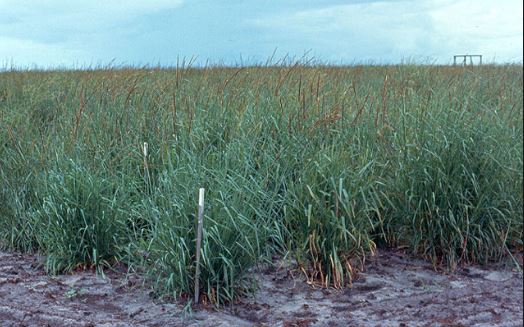Dairy farmers can now grow giant setaria grass, a fodder crop that is tolerant to Napier head smut and stunt diseases and can increase milk yields by 25 per cent.
The fodder grass was developed by the Kenya Agricultural and Livestock Research Organization five years ago but has seen a low up take by farmers due to inadequate information available about it as 65 per cent of farmers in the country rely on Napier grass to feed their livestock.
The grass can yield up to four tons of dry matter per acre per year and grows well in both low and high altitude regions of Kenya receiving annual rainfall of 1000 to 2500mm.
Related
New planting method increases Napier grass yields by 20 per cent and milk yields by 50 per cent
Feeding livestock with a mixture of Napier grass and desmodium increases milk yields
Super grass cuts greenhouse gases, tripling yields
Giant setaria grass can be used for soil conservation purposes when planted along border lines and this can help in preserving soil fertility and enhance crop production.
Farmers can source the grass seed splits from KALRO centers near them, the ministry of agriculture or farmers who have grown the grass.
The root splits obtained should be from an established healthy field.
While planting the grass, single root splits should be placed per hole at a spacing of 50cm by 50cm from hole to hole and the same spacing from plant to plant.
TSP/DAP fertilizer is recommended at the rate of one bottle top per hole or farm yard manure at the rate of two spoonsful per hole. After planting, the splits need to be covered firmly with soil.
The grass mature three to four months after planting. When harvesting, maintain a height of five centimeters from the ground to allow fast re-growth.
After cutting of the grass, chop two to three centimeters and feed them while still fresh to cows, sheep or goats. The grass can also be used for silage making.
The grass has 10 to 12 per cent crude protein content.
Subsequent harvests are done at six to eight weeks intervals. After every two harvests apply CAN fertilizer at the rate of one bottle top per stool translating to two bags of 50kg per acre. Alternatively, apply two handfuls of farm yard/compost manure per stool.
With this grass, farmers can increase milk yields by 25 per cent and hence earn more income.
In 2017, Kenya’s milk production dropped by 30 per cent to 3.64bn liters due to prolonged drought according to the Kenya Dairy Board.
The country exported three million kilograms of milk last year, a 50 per increase from the two million kilos in 2016.

















Comments powered by CComment